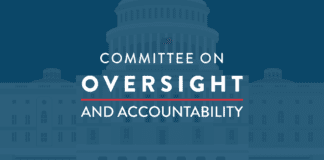This article was originally posted on 1945.
Why North Korea Wants Nuclear Weapons: South Korea is busy preparing for the May 10 inauguration of President-elect Yoon Suk-yeol. During the closely-contested election campaign, he advocated harder-line diplomacy for Seoul, rejecting outgoing President Moon Jae-in’s failed “sunshine policy.” Yoon said, for example, “[W]e shall stand on the right side of history with the U.S. by making sure that those who undermine the liberal international order pay the price accordingly.” He also pledged to improve long-strained relations with Japan, which worsened under his predecessor.
All this suggests closer Indo-Pacific cooperation against the aspiring hegemon China, but the President-elect’s most urgent challenge is North Korea’s increasingly threatening military posture and its bellicose rhetoric. As he prepares for his swearing-in, Yoon must assess the increasing risks of Pyongyang’s provocations against Seoul and Washington, its principal ally. With limited intelligence about North Korea’s actual intentions, assessments of its leaders’ pronouncements, whether intended for foreign or domestic consumption, are often simply shoe-horned into pre-conceived notions. Nonetheless, despite years of theorizing that the North’s main purpose for seeking deliverable nuclear weapons was to defend the ruling regime, it is increasingly clear that the true central objective of those efforts is to reunify the Peninsula on the Kim dynasty’s terms.
This is a jarring, disconcerting conclusion for many, but concrete evidence from the North’s nuclear weapons and ballistic-missile programs is telling. Kim Jong Un has been no slacker in both advancing his menacing weapons programs and propaganda to conceal his actual intentions. For example, four of North Korea’s six nuclear tests occurred on his watch, including the last known shot in 2017 (all six at the Punggye-ri test site). As of 2020, former CIA analyst Jung H. Pak calculated that Kim had tested three times more missiles than his two predecessors combined. In the past two years, the pace has increased, with 22 tests so far this year. As to disinformation, in 2017, Kim orchestrated a media spectacular, “closing” the Punggye-ri tunnel entrances, but allowing no prior international inspection of the tunnel system and no verification of what was actually closed. This reverse-Potemkin village fantasia closely resembled the 2008 destruction of the Yongbyon nuclear reactor’s cooling tower, impressive for the credulous media but not affecting the aging reactor’s key operating systems.
Why the renewed bellicosity now rather than during Donald Trump’s personal diplomacy, when Kim suspended nuclear and long-range missile testing?
Trump’s answer, centering on himself, of course, is that he intimidated Kim, yet they also enjoyed a close personal relationship. The more compelling explanation is that North Korea had learned what it needed through its six nuclear tests to proceed to systematic warhead production for its stockpile. Moreover, while long-range missile testing was suspended, frequent launch-testing of shorter-range missiles continued, notwithstanding that these tests violated applicable Security Council resolutions. The lessons thereby learned could readily be scaled up for ICBMs, albeit likely subject to further testing at the appropriate time. Like now.
Moreover, Kim undoubtedly believed he could entice Trump into a deal highly favorable to Pyongyang, following the North’s usual (and usually successful) playbook: Kim would commit to ending the nuclear program and even destroy or shutter portions of it, in exchange for America (and Japan) terminating economic sanctions and providing material assistance. Kim’s visible disappointment at the 2019 Hanoi Summit, having failed to close the deal he wanted, and the lack of further progress, likely put Kim into a holding pattern until after the 2020 U.S. presidential elections.
To read the original article, please click here.
Ambassador John R. Bolton served as national security adviser under President Donald J. Trump. He is the author of “The Room Where It Happened: A White House Memoir.” You can follow him on Twitter: @AmbJohnBolton.



